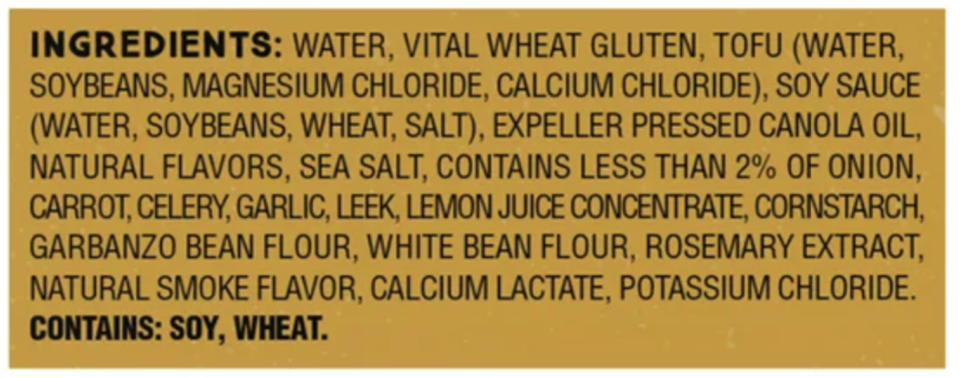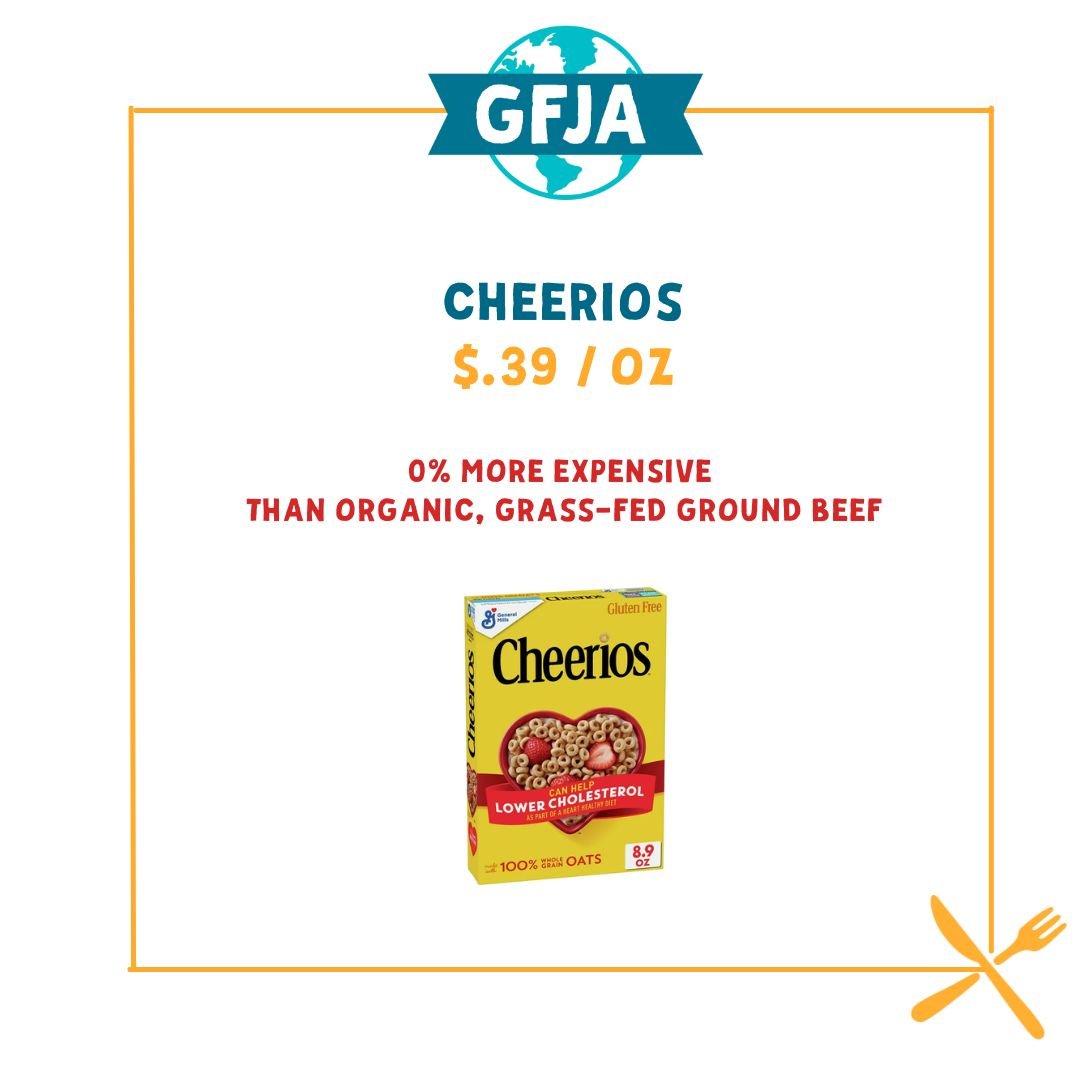Think it’s too expensive to eat well? A fresh look at the value of meat
“It’s time we stop comparing food prices per package or by weight and instead compare per nutrient.”
Recently, I learned that the number one reason why people reduce their intake of meat is because of price, followed by concerns about their health.
I’ve written many times about why meat is a healthy food, full of protein and important nutrients like iron and B12 and have also laid to rest the fears that eating red meat will increase your chance of getting heart disease and cancer because the evidence is weak at best. In the context of an overall healthy lifestyle, red meat will only increase your chances of thriving for a long time.
What about the “less meat, better meat” idea? Well, all meat is healthy. Feed-lot finished beef is a wonderful source of nutrition and is not “toxic”. It would be unethical for any health practitioner to tell someone to only eat organic vegetables or none, and it’s the same when it comes to meat. There seems to be a small increase in phytonutrients and other potentially beneficial compounds from some grass-finished beef, but this doesn’t negate the health properties of typical beef, which is more accessible.
Affordability:
Please buy the meat that best aligns with your values but don’t give up eating meat because you can’t afford regenerative or grass-fed beef. Instead, seek out less expensive cuts like organ meats or ground beef, and remember, even typical beef provides wonderful nutrition that cannot be replicated by beans and rice (which are 4 times the calories for the same protein you can get from beef). Plus, one serving of beef (regardless of how it was raised) delivers nutrients which are commonly deficient in many people, like iron and B12. And when it comes to alternative proteins like plant-based burgers, real beef (even organic, grass-fed beef) delivers better nutrition for a lower price.
It’s time we stop comparing food prices per package or by weight and instead compare per nutrient.
That being said, is meat really so expensive compared to common foods?
I decided to do some investigation and compare the price per ounce of organic grass-fed beef - some of the best meat available, from a nutrition and sustainability perspective - to other processed foods, meat alternatives, and selected “health” foods.
Here’s what I found:
To truly understand if meat is too expensive, I compared the price of organic grass-fed ground beef to a few common foods that most people would not consider too expensive, like fresh fruit, vegan proteins, chips, and candy.
Beyond looking at the price at face value, we need to analyze the nutritional value of each food. As far as nutrient density, one ounce of grass-fed beef has approximately 40-60 calories (depending on the cut), 6 grams of high-quality, bioavailable protein, and 2-4 grams of fat. It’s high in iron, vitamin D, a good source of almost all the B-vitamins (B12, riboflavin, pantothenic acid, niacin, and vitamin B6), as well as several minerals like zinc, magnesium, phosphorus, and selenium. Seems like a worthy investment to me.
Since the price of meat can vary so much depending on location and cut, I decided to see what organic grass-fed beef costs at one of the most widely accessible stores in the country: Walmart. On their website, the organic grass-fed ground beef, 85% lean, is $6.28 per pound or $0.39 per ounce.
Most people in the US have a local Walmart, so for the point of comparison with other foods, I decided to use this organic grass-fed ground beef.
When you calculate the cost per ounce, grass-fed beef is actually cheaper than many foods people consider “common” like candy bars and chips. It is also significantly less expensive than many meat substitutes.
The Beyond Burger meat alternative is more expensive than the organic grass-fed ground beef and less nutritious. While it does provide a substantial amount of protein, the plant-based protein sources are less bioavailable than from real beef, and the micronutrients profile comes from fortified synthetic nutrients, which like protein, are not as bioavailable as eating the vitamin or mineral in its real food form.
Similarly, when we compare plant-based tofurky “deli meat” to the organic grass-fed ground beef, we see that the real meat is not only cheaper, but more nutritious, which is clear when you compare the one ingredient beef to the long list of ingredients in the deli slices.
If I were to post a picture of a salad with spring mix or a bowl of raspberries, I don’t think anyone would say I'm promoting elitist foods. When in fact, organic spring mix from Walmart is considerably more expensive per ounce than the organic grass-fed beef. Not to mention, the difference in nutritional value between these two foods. Vegetables have an important role in a healthy, balanced diet, but there’s no question that beef is a more nutrient-dense option, especially when it comes to providing the nutrients that are of most concern for nutrient deficiencies like iron, zinc, essential fatty acids, and vitamins A and B12.
Next, I compared the organic grass-fed ground beef to a cliff bar, which is widely accepted as a ‘healthy snack bar”. At 46 cents per ounce, a cliff bar is significantly more expensive than the organic, grass-fed ground beef. And when you look at the ingredient list and account for the nutritional value of each of these, the beef is the clear winner.
I also compared organic grass-fed ground beef to typical “healthy” breakfast foods, like Cheerios and granola. Cheerios come out to be equivalent in price to the ground beef, however the nutritional profile is incomparable. A serving of Cheerios provides an insignificant 4 grams of protein, and while it may appear that it provides micronutrients, Cheerios are a highly processed food whose nutrients are artificially added during processing, not naturally occurring, meaning they are less bioavailable to our bodies. Similarly, granola is not a great source of protein and lacks the bioavailable nutrients that we get from meat like ground beef and is considerably more expensive.
Is a Snickers bar or bag of Cheetos “too expensive”? When you do the math, a Snickers bar comes out to 61 cents per ounce and a bag of Cheetos costs 47 cents per ounce. Remember, the organic, grass-fed ground beef is 39 cents per ounce. That means a Snickers bar is almost 1.5x more expensive than beef. Most people would not bat an eye at the price of these junk food options, but without even considering the nutritional differences between candy, chips, and beef, the beef is actually much more affordable.
Is Meat Too Expensive?
Overall, there are many foods that people would not consider exceptionally expensive that ounce per ounce actually are WAY more expensive and less nutritious than grass-fed beef.
Many people in the grass-fed and regenerative agriculture community think everyone should only be buying their meat directly from a local farmer they know. When people have that option I do think it’s ideal, but for those who shop primarily at Walmart and don’t have a lot of extra time on their hands, convenience and price do matter. The fact that Walmart has organic grass-fed beef readily available for a reasonable price for consumers, does make it possible for most people to have it on their plate.
Now, how does organic grass-fed ground beef compare to other animal protein options at Walmart? Comparing the organic grass-fed ground beef is still one of the most affordable options, especially when compared to steak or the organic chicken breast. The conventional pork chops are just slightly cheaper at $.33 per ounce and the eggs are quite affordable, although keep in mind you will need a larger serving of eggs to consume significant amounts of protein and micronutrients.
You don’t need to consume expensive steaks to have a healthy, nourishing diet. The organic grass-fed beef offers various essential nutrients, bioavailable protein, and quality fats that are essential for a nutritious diet and comes out to only $1.57 per serving.
Grass-fed beef is always more expensive than typical beef, but if you’re looking to source more grass-fed or regeneratively raised meat, try buying in bulk, reaching for cheaper cuts that are just as nutritious (if not more) than filet mignon, and stretching your ingredients by using the whole animal, like organ meat and bones.
Want to help my efforts to educate people about the importance of animal-sourced foods and get meat to food insecure people? Join the Global Food Justice Alliance today!















